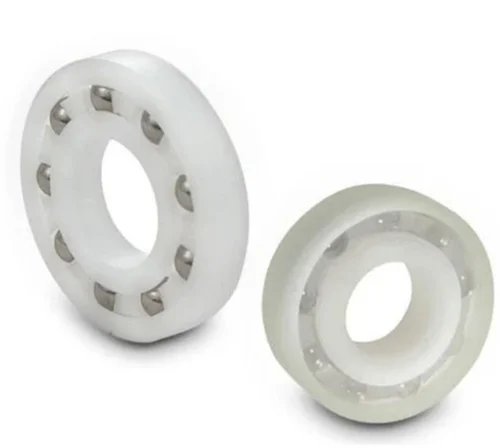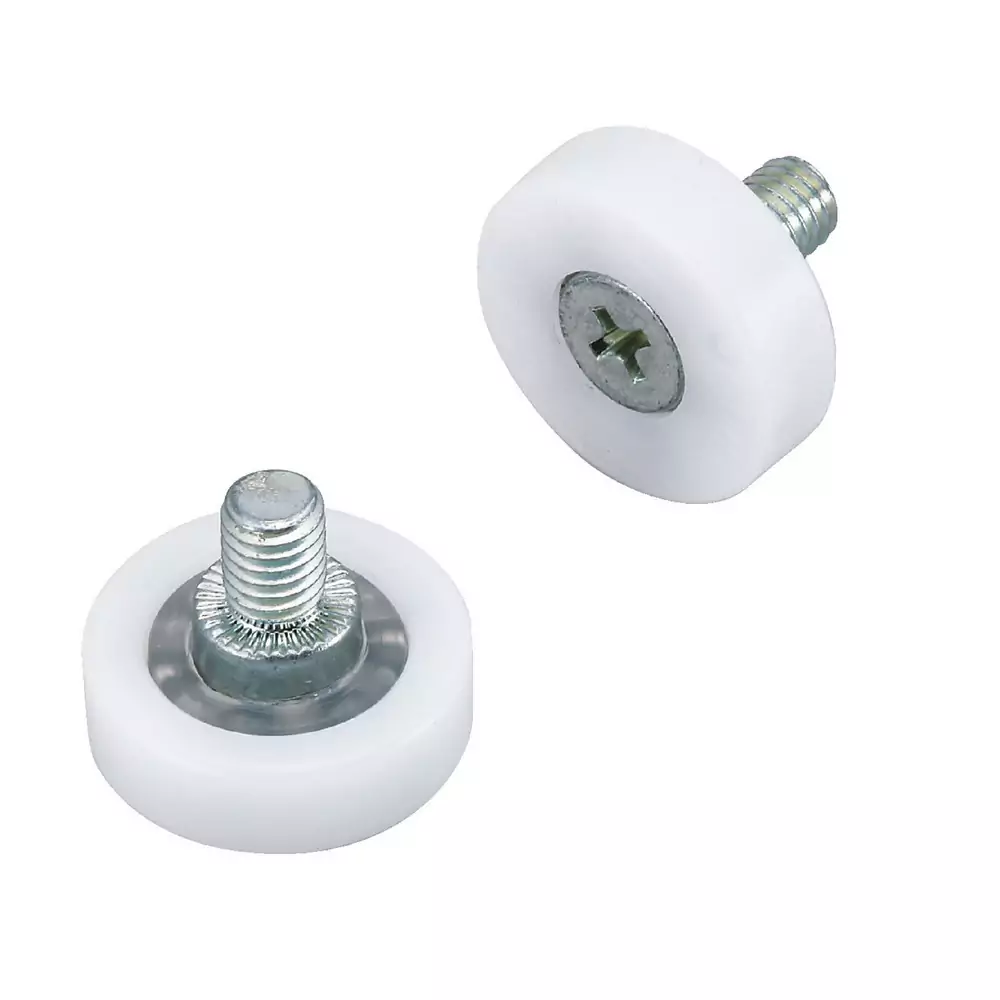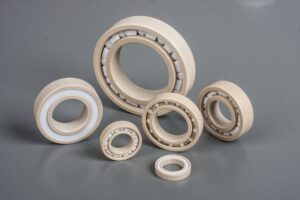Product Description
China Supplier CZPT CZPT CZPT Gearbox Water Pump Plastic Machinery Taper Roller Bearing 32012
Tapered roller bearing is a kind of radial thrust rolling bearing whose rolling element is tapered roller. There are small cone angle and large cone angle. The small cone angle mainly bears the radial and axial combined load dominated by the radial load, which is often used in pairs and installed in reverse direction. The inner and outer seat rings can be installed separately, and the radial and axial clearance can be adjusted during the installation and use; the large cone angle mainly bears the axial and radial combined load dominated by the axial load, which is generally not used to bear the pure axial load alone, but as a pair configuration (the same name end is opposite) It can be used to bear pure radial load.
| Product name | Tapered roller bearing |
| Material | Bearing Steel |
| Standard | DIN GB ISO JIS |
| Bearing Package | Barreled, bagged, boxed, palletized or as customers’ requirement. |
| Service | OEM service provided |
| Delivery time | 3-10 days depends on quantity needed |
Features and Benefits:
1: It is a separate type bearing. Both the inner and outer rings of the bearing have tapered raceways, and the rollers are cone-shaped. The roller and raceway are in linear contact, which can bear heavy radial and axial combined load and axial load. The larger the contact angle is, the higher the axial bearing capacity is; on the contrary, the smaller the contact angle is, the lower the axial bearing capacity is.
2: The design of tapered roller should make the contact line between roller and inner and outer raceway extend and cross at the same point of bearing axis to realize rolling.
3: Tapered roller bearings can be divided into single row, double row and 4 row tapered roller bearings. This kind of bearing also uses English series products.
Our Advantages
1. World-Class Bearing: We provide our customers with all types of indigenous bearing with world-class quality.
2. OEM or Non-Stand Bearings: Any requirement for Nonstandard bearings is Easily Fulfilled by us due to its vast knowledge and links in the industry.
3. Genuine products With Excellent Quality: The company has always proved the 100% quality products it provides with genuine intent.
4. After Sales Service and Technical Assistance: The company provides after-sales service and technical assistance as per the customer’s requirements and needs.
5. Quick Delivery: The company provides just-in-time delivery with its streamlined supply chain.
FAQ
SAMPLES
1. Samples quantity: 1-10 PCS are available.
2. Free samples: It depends on the Model No., material and quantity. Some of the bearings samples need client to pay samples charge and shipping cost.
3. It’s better to start your order with Trade Assurance to get full protection for your samples order.
CUSTOMIZED
The customized LOGO or drawing is acceptable for us.
MOQ
1. MOQ: 10 PCS standard bearings.
2. MOQ: 1000 PCS customized your brand bearings.
OEM POLICY
1. We can printing your brand (logo, artwork)on the shield or laser engraving your brand on the shield.
2. We can custom your packaging according to your design
3. All copyright own by clients and we promised don’t disclose any info.
/* January 22, 2571 19:08:37 */!function(){function s(e,r){var a,o={};try{e&&e.split(“,”).forEach(function(e,t){e&&(a=e.match(/(.*?):(.*)$/))&&1
| Brand Name: | Koyo, NSK, NTN, Timken, NACHI |
|---|---|
| Precision Rating: | P0, P6, P5 |
| Seals Type: | Open/2ls |
| Number of Row: | Double Row |
| Backlash: | C0/C2/C3/C4 |
| Bearing Types: | N, Nu, Nj, NF, Nup, Nn, Nnu, FC, Fcd, Fcdp, etc |
| Customization: |
Available
| Customized Request |
|---|

What is the role of cage design and materials in plastic bearing performance and durability?
The role of cage design and materials in plastic bearing performance and durability is significant. Here’s a detailed explanation:
- 1. Guidance and Retention:
The primary role of a cage in a plastic bearing is to guide and retain the rolling elements, such as balls or rollers. The cage holds the rolling elements in position, ensuring proper spacing and alignment within the bearing. This guidance and retention function is crucial for maintaining smooth and efficient operation, preventing contact between rolling elements, and distributing loads evenly. The cage design plays a critical role in achieving optimal performance and durability by providing effective guidance and retention of the rolling elements.
- 2. Load Distribution:
The cage design and materials contribute to the load distribution within the bearing. The cage helps distribute the applied loads evenly to the rolling elements, preventing excessive stress on individual elements and minimizing the risk of premature failure. An efficient cage design ensures that the load is shared appropriately among the rolling elements, maximizing the bearing’s load-carrying capacity and enhancing its durability.
- 3. Friction and Heat Generation:
The cage design and materials also influence the friction and heat generation within the bearing. A well-designed cage minimizes friction between the rolling elements and the cage itself, reducing energy losses and heat generation. Additionally, the choice of cage material can impact the coefficient of friction and thermal conductivity. Optimal cage materials with low friction and good thermal properties can contribute to improved performance, lower operating temperatures, and increased durability of the plastic bearing.
- 4. Lubricant Retention:
Certain cage designs are specifically engineered to assist in lubricant retention within the bearing. The cage structure can create pockets or reservoirs that hold and distribute lubricating oil or grease to the rolling elements. This ensures a continuous and adequate supply of lubrication, reducing friction, wear, and the risk of premature failure. Proper lubricant retention facilitated by the cage design is essential for maintaining the performance and durability of plastic bearings.
- 5. Resistance to Harsh Environments:
The choice of cage material is crucial for ensuring the resistance of plastic bearings to harsh operating environments. Different cage materials offer varying degrees of resistance to chemicals, moisture, temperature extremes, and other environmental factors. Selecting the appropriate cage material that is compatible with the application’s operating conditions is essential to maintain the bearing’s performance and durability over time.
- 6. Durability and Service Life:
The cage design and materials significantly impact the overall durability and service life of plastic bearings. A well-designed cage that effectively guides and retains the rolling elements, distributes loads evenly, minimizes friction, and retains lubrication contributes to the bearing’s longevity. Additionally, using durable and suitable cage materials that can withstand the operating conditions ensures the bearing’s ability to withstand wear, fatigue, and other forms of degradation, resulting in extended service life.
In summary, the cage design and materials play a crucial role in the performance and durability of plastic bearings. The cage provides guidance, retention, and load distribution for the rolling elements, minimizes friction and heat generation, assists in lubricant retention, ensures resistance to harsh environments, and contributes to the overall durability and service life of the bearing. By considering the appropriate cage design and materials, manufacturers can optimize the performance, reliability, and longevity of plastic bearings in various applications.

How do plastic bearings perform in wet or corrosive environments?
Plastic bearings are known for their excellent performance in wet or corrosive environments. Here’s a detailed explanation of how plastic bearings perform in such conditions:
- 1. Corrosion Resistance:
Plastic bearings exhibit high corrosion resistance, making them well-suited for wet or corrosive environments. Unlike metal bearings that can rust or corrode when exposed to moisture or corrosive substances, plastic bearings are unaffected by these conditions. They can resist the effects of water, chemicals, acids, alkalis, and other corrosive agents, ensuring long-term functionality and preventing premature failure.
- 2. Moisture Resistance:
Plastic bearings have inherent moisture resistance properties. They are not affected by water absorption, which can cause dimensional changes and degradation in some materials. Plastic bearings maintain their shape, dimensional stability, and mechanical properties even when exposed to high levels of moisture or humidity. This makes them suitable for applications where water or moisture is present, such as marine environments, wastewater treatment plants, or outdoor equipment.
- 3. Chemical Resistance:
Plastic bearings offer excellent resistance to a wide range of chemicals, including acids, bases, solvents, and oils. They are inherently non-reactive, which means they do not undergo chemical reactions or degradation when exposed to various chemical substances. This chemical resistance allows plastic bearings to perform reliably in environments where exposure to corrosive chemicals is common, such as chemical processing plants or laboratories.
- 4. Self-Lubrication:
Many plastic bearings are self-lubricating, meaning they have built-in lubrication properties that eliminate the need for external lubrication. Self-lubricating plastic bearings are often impregnated with solid lubricants, such as PTFE (polytetrafluoroethylene) or graphite, which provide a low-friction interface between the bearing surfaces. This self-lubrication feature allows plastic bearings to maintain their performance even in wet or corrosive environments, where traditional lubricants may wash away or be compromised.
- 5. Reduced Contamination:
Plastic bearings contribute to reduced contamination in wet or corrosive environments. Unlike metal bearings that can generate wear particles or rust, plastic bearings do not shed particles or corrode, minimizing the risk of contamination. This is particularly important in applications where cleanliness is crucial, such as food processing, pharmaceutical manufacturing, or cleanroom environments.
- 6. Lightweight:
Plastic bearings are lightweight compared to metal bearings. This makes them advantageous in wet or corrosive environments, as they can reduce the overall weight of the equipment or machinery. Additionally, the lightweight nature of plastic bearings reduces the load on supporting structures and allows for more efficient operation in these environments.
In summary, plastic bearings perform exceptionally well in wet or corrosive environments. Their corrosion resistance, moisture resistance, chemical resistance, self-lubrication properties, reduced contamination risk, and lightweight nature make them reliable and durable choices for applications where exposure to water, chemicals, or corrosive substances is prevalent.

How do plastic bearings compare to traditional metal or steel bearings in terms of performance?
When comparing plastic bearings to traditional metal or steel bearings, several factors come into play in terms of performance. Here’s a detailed comparison of plastic bearings and traditional metal or steel bearings:
- 1. Friction and Wear:
Plastic bearings generally exhibit lower friction coefficients compared to traditional metal or steel bearings. This characteristic results in reduced energy consumption, smoother operation, and less wear on the bearing surfaces. Plastic bearings often have self-lubricating properties, further enhancing their resistance to wear and reducing the need for external lubrication. On the other hand, metal or steel bearings may require regular lubrication to maintain optimal performance and prevent excessive wear.
- 2. Corrosion Resistance:
Plastic bearings offer excellent resistance to corrosion, making them particularly suitable for applications in moist or corrosive environments. Unlike metal or steel bearings, plastic bearings do not rust or corrode, allowing them to maintain their performance and integrity over time. Metal or steel bearings, while often treated with protective coatings, may still be susceptible to corrosion if the coating is compromised or in aggressive operating conditions.
- 3. Load Capacity:
Traditional metal or steel bearings generally have higher load-carrying capacities compared to plastic bearings. Metal bearings are known for their high strength and ability to withstand heavy loads and shock forces. Plastic bearings, although continuously improving in this aspect, may have lower load-carrying capacities and are typically more suitable for moderate load applications. It is important to carefully evaluate the specific load requirements of the application when considering plastic bearings.
- 4. Temperature Range:
Metal or steel bearings typically have a broader temperature range compared to plastic bearings. While plastic bearings can operate effectively within specific temperature limits, exposure to extreme temperatures can affect their performance. Certain plastic materials, such as PEEK, offer higher-temperature resistance, but they may still have limitations compared to metal or steel bearings, which can handle a wider range of temperatures.
- 5. Noise and Vibration:
Plastic bearings possess inherent damping properties, which can help reduce noise levels and vibrations in machinery and equipment. The ability of plastic materials to absorb vibrations contributes to a quieter and smoother operation. Metal or steel bearings, although effective in many applications, may produce more noise and vibrations due to their higher rigidity and less damping characteristics.
- 6. Cost and Maintenance:
Plastic bearings can offer cost advantages over metal or steel bearings in certain situations. Plastic bearings often have lower material and production costs, which can contribute to overall cost savings. Additionally, plastic bearings can require less maintenance due to their self-lubricating properties, resistance to corrosion, and reduced wear. Metal or steel bearings may require more frequent lubrication, inspection, and replacement, which can increase maintenance costs and downtime.
It’s important to note that the performance of plastic bearings and traditional metal or steel bearings can vary depending on the specific application requirements. While plastic bearings excel in certain areas such as corrosion resistance, low friction, and noise reduction, metal or steel bearings may be more suitable for high-load or high-temperature applications. Engineers and designers should carefully evaluate the performance characteristics of both types of bearings and consider the specific needs of the application to determine the most appropriate choice.


editor by CX 2024-05-02